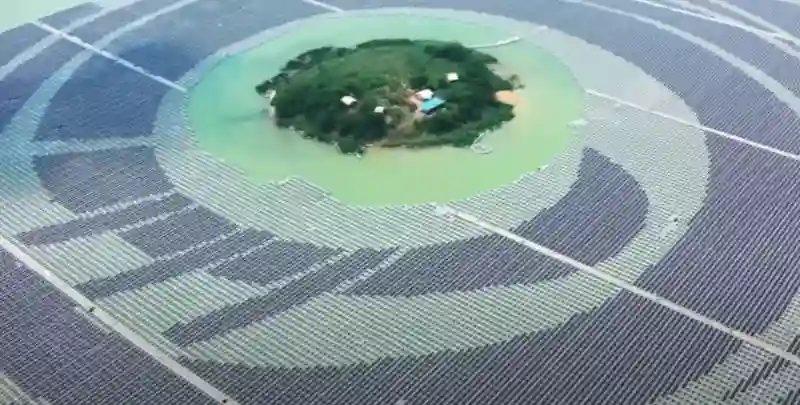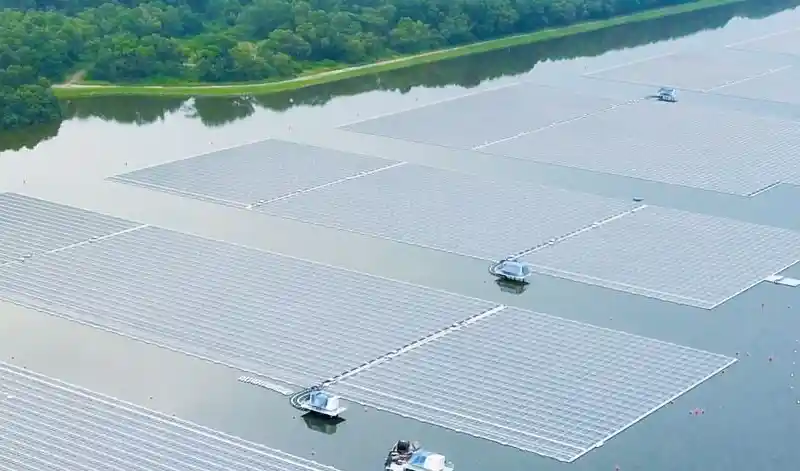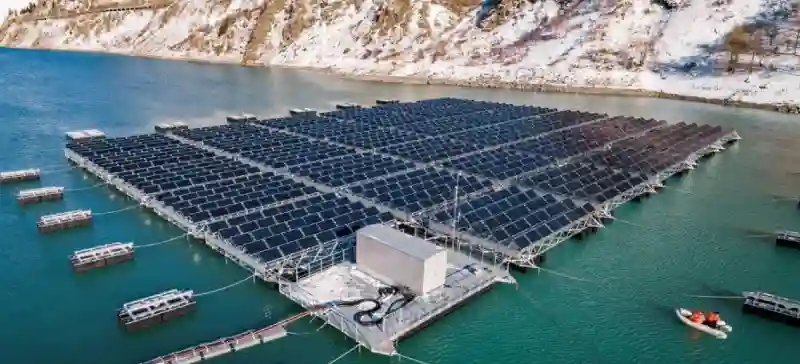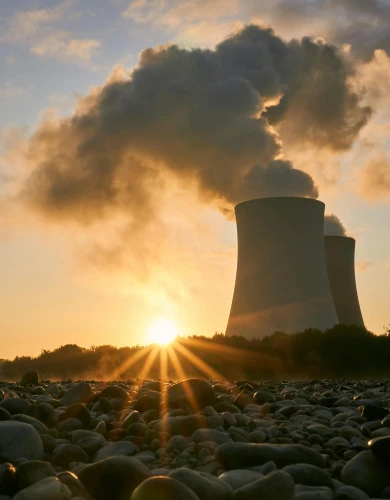Is floating solar energy truly revolutionary?
The installation of floating solar farms worldwide is increasing exponentially and is expected to reach a whooping 10GW by 2025.
This growth is particularly strong in India, China and Southeast Asia, which have high population densities and energy demand but little space to install renewables. All countries in that region have legally committed to reaching UK climate commitments of net zero by 2050.
Floating solar farms offer low-carbon energy without utilising any developable land and with the added benefit of producing green energy within metropolitan or industrial areas.
In this article, we explain what floating solar is, its pros and cons, and we explore the case studies that clearly demonstrate the potential for this tech.
Contents
- What is a floating solar PV farm?
- How do floating solar PV farms work?
- What are the pros and cons of solar PV farms?
- What are the largest floating solar PV farms?
- What are three flagship floating PV projects worldwide?
- Are there floating solar PV farms in the ocean?
- How are floating solar PV farms installed?
- What does Solar PV stand for?
- Are there any floating solar PV projects in the UK?
- Are there any floating solar panel suppliers in the UK?
- What are floating solar arrays?
What is a floating solar PV farm?
A floating solar PV (photovoltaic) farm refers to a large quantity of modular solar panels mounted on structures that float on a body of water, typically an inland reservoir or lake.
The idea is to leverage the (often) empty space at the surface of a reservoir or lake to install these structures to produce energy in proximity to infrastructure that needs it while having indirect benefits to the local economy and minimal disruption to local ecosystems.
How do floating solar PV farms work?
Floating power stations work the same way as traditional land-based commercial solar farms, except that the infrastructure (i.e. panels, cables, inverters etc) is mounted on floating pontoons.
The pontoons are generally made of non-corrosive, UV-resistant floating materials such as specialized varieties of high-density polyethene that do not degrade with sun exposure or leach microplastics into the water.
What are the pros and cons of solar PV farms?
Below are some generic advantages and disadvantages of floating solar PV farms. Note, however, that some of these will vary depending on the context of each project.
Pros of floating solar PV facilities
- Densely populated areas: Sometimes reservoirs offer some of the only empty space within metropolitan or industrial areas (e.g. Singapore). Installing floating solar farms in these spaces is a solution to provide renewable business energy to local infrastructure without incurring energy losses in transmission.
- Land Use: One of the main criticisms of land-based solar PV farms is the use of valuable land which could otherwise be utilised for grazing, agriculture, homes, reforestation, parks, etc. Installing floating panels takes up virtually no land.
- Agile energy: Floating on the water means that these can easily be transferred to another area and dismantled, decommissioned, or moved onto land or another water body if power production becomes unfavourable.
- Evaporation: The shade provided by floating structures can dramatically reduce water evaporation in reservoirs used for storage and energy generation, improving water and energy security, particularly in arid areas like India and Australia. Or even the UK during drought.
- Cooling: The solar panel and inverter electronics can leverage the heat-regulating properties of the underlying water to cool its system and operate at optimum temperatures, particularly in hot regions (often the sunniest!). Due to cooling, floating panels in Switzerland are 50% more efficient than their land-based counterparts.
- Water Quality: The cooling effect from shading may also be beneficial to counter-act water heating due to climate change, which is threatening many aquatic ecosystems that many local populations depend on (i.e. fishing). Also, the reduced light can hamper the growth of colonising algal blooms that can decimate local water species, especially in polluted water.
- Energy Storage: Although still at the idea stage, floating PVs installed on pumped hydro sites (large-scale, low-carbon batteries which utilise two reservoirs at different heights to store energy) could be used as reliable, base-load low-carbon energy sources.
- Infrastructure: Reservoirs tend to be built for hydro-power, so transmission infrastructure is already installed. This means that floating solar PV can be used to increase hydropower output while reducing the evaporation of the water it depends on.
Cons of floating solar PV facilities
- Corrosion: Since this infrastructure operates near water, it must be designed to be corrosion-resistant, which comes at a premium. Also, some water bodies viable for floating solar have brackish water, which contains problematic salt that can easily cause damage to electronics.
- Fluidity: Being on the water means the system will always be in motion, and moving parts result in increased wear, solar maintenance and potentially a shorter lifespan. Also, maintenance on the water tends to be more difficult, even if the structures can be easily accessed via boat and space available to work comfortably on the platoons.
- Recreation: Some reservoirs are used by local communities for recreational activities such as sailing, rowing, windsurfing, etc. Installing floating solar PV may reduce or render these recreational areas inaccessible.
- Winds/Waves: Inland water bodies are more exposed to high winds and waves, particularly during storms. This means the infrastructure must be designed with this in mind (appropriate anchors, flexibility, etc).
- Cost: It is estimated that the costs of building a floating solar farm were 20-25% more expensive in 2019 than the cost of commercial solar on land, which increases the business electricity rate per kWh compared to other alternatives like roof installations. This may change in future as the technology scales.
- Unnecessary: Some argue that solar panels are more simply and effectively deployed elsewhere. For example, placing them in car parks could provide shade and power for EV charging or install them on household/business roofs to decentralise power generation.
What are the largest floating solar PV farms?
The table below summarises the world’s five most extensive floating solar PV facilities, including those under construction.
| Name | Location | Peak Capacity (MW) | Notes | |
|---|---|---|---|---|
| Khandwa | Madhya Pradesh , India | 600 MW | Under construction, expected 2023 | |
| Dezhou Dingzhuang | Shandong, China | 320 MW | Complemented by 100MW of onshore wind and 8MWh battery storage | |
| Three Gorges | Three Gorges Dam, China | 150 MW | Built on the Three Gorges Reservoir it complements the largest hydro project in the world. | |
| Tengeh | Singapore | 150 MW | Supplies energy for Singapore's entire water treatment. | |
| Tata Power Solar | Kerala, India | 100 MW | Largest floating Solar in India to date. |
It is clear from these that the technology is predominantly scaling in highly populated areas of Asia.
What are three flagship floating PV projects worldwide?
We have hand-picked three projects in different countries to illustrate this technology’s range of use cases.
Dezhou Dingzhuang (320MW – China)

Dezhou Dingzhuang is currently the largest floating solar PV farm in the world. It covers a large water area (21.6 square km) and has 170,000 solar panels (made by electronics manufacturer Huawei), which can power 100,000 homes at peak capacity.
The panels were installed in two sizeable inland water reservoirs next to the city of Dezhou in the Eastern Chinese province of Shandong, home to a whopping 100 million people, equivalent to the population of Germany and the Netherlands combined.
It is part of a massive energy installation that also includes:
- A 100MW wind farm (to supplement generation on windy days)
- A 2.65 GW Coal-fired station (to act as baseload for the region)
- 8MWh or solar battery storage (to store excess renewable energy)
Despite the coal fire station still being the principal energy generator of this composite energy complex, renewables (including those stored in the batteries) are prioritised, particularly for powering the Beijing – Shanghai fast-speed railway infrastructure.
This may seem like a typical case of greenwashing, but it is easier to accept when considering China’s circumstances. Unlike the already-developed West, China’s gargantuan task of catching up with Western standards requires a colossal amount of energy.
Much of this goes to producing much of the tech the West thrives on, such as microchips, superconductors and the EV Li-Ion batteries necessary for the green transportation.
We digress; this solar farm is also built on top of a fish farm, providing an extra revenue source for the operating entities. According to this, the annual fishery income can reach nearly 5 Million US dollars annually, almost 10% additional revenue from solely selling electricity.
Tengeh Reservoir (150MW – Singapore)

This flagship Singaporean project (currently under construction) is a textbook example of using floating solar panels to produce low-carbon energy in places where space is a valuable asset.
Singapore has the third largest population density in the world behind Macao and Monaco, as it is essentially a separate city-state entirely bound by Malaysia and the Indian Ocean.
The project by the Singaporean Water Agency (PUB) and Sembcorp will consist of 122,000 solar PV panels spread across 16 arrays sitting on 250,000 pontoons, covering 45 hectares.
It has a capacity of 60MW peak (i.e. the peak amount of energy it can produce during ideal daytime conditions), which is enough to power 16,000 Singaporean HBD four-bedroom flats.
But instead of powering the cities’ homes and businesses, the electricity is used to power its energy-hungry water treatment plants, supplying most of its energy needs, essentially making Singapore one of the only countries with “green water” (Something similar was attempted in London by Thames Water).
Lac de Toules (0.09MW – Switzerland)

This comparatively small project built by Romande Energie in Switzerland gets a special mention because it is conceptually distinct in that it was built on a high-altitude, seasonally snowy winter setting to increase yield.
Assembled on Lac de Toules at 1800m above sea level, it is the highest floating solar PV farm in the world and can generate 50% more energy than typical low-lying panels because:
- It receives more intense solar radiation due to its high altitude.
- It experiences colder temperatures throughout the year, which makes it more efficient.
- Reflected solar radiation from the winter snow cover increases the yield even more.
The project has been generating electricity to power a mere 220 households since 2019, but its conceptual significance and media attention brought floating solar facilities to the mainstream media in Europe.
In winter, the reservoir is drained, meaning there is virtually no ecosystem to damage, making this project virtually zero impact. The panels sit on the frozen bedrock during winter.
Additionally, it benefits the local communities by attracting tourism to this new ‘site’ while potentially being a precursor to floating solar on high-altitude lakes like Peru’s Lake Titicaca, which sits at 4,000 m above sea level and has virtually equatorial sun exposure all year round.
Are there floating solar PV farms in the ocean?
Multiple firms are exploring the potential of having floating solar panels on the ocean, which would be incredibly useful in powering desalination plants, remote islands or sea infrastructure.
Unlike floating solar on inland water bodies, conceptual prototypes such as the Ocean Sun are round ‘island-like’ structures that can withstand harsh oceanic conditions using hydroelastic membranes to set the solar panels on.
If it becomes cost-effective, this could be extremely useful in places with low potential for offshore wind but a lot of sun, such as the doldrums. After all, the ocean’s surface covers two-thirds of the globe and has barely been utilized for energy production.
Floating solar panels – FAQs
Got questions about floating solar panels? Our experts are here to give an answer.
How are floating solar PV farms installed?
Most of the projects we have researched appear to have a modular design that may be assembled on the bank of the reservoir/lake and later towed and anchored to their desired location.
Since the parts tend to be specifically manufactured for this use case (like IKEA products), they may be assembled relatively quickly compared to other structures requiring earthworks.
In extreme cases like Switzerland, a helicopter was required during assemblage due to the inability to provide a crane due to inaccessibility.
What does Solar PV stand for?
Solar PV stands for Solar Photo-voltaic system, essentially a technical name for the typical black-coloured panels you may have seen on roofs.
Are there any floating solar PV projects in the UK?
Yes! The floating solar power installation built on London’s Queen Elizabeth II reservoir is the largest in Europe, with a peak capacity of 6.3MW.
It powers 20% of Thames Water’s water utility infrastructure, with its 61,000 solar panels covering 10% of the reservoir. 177 anchors fix the panels
Are there any floating solar panel suppliers in the UK?
To our surprise, some companies can install, maintain and operate floating solar panels if you have a reservoir available for this (usually agricultural land).
According to Floating Solar UK, you may be able to rent your reservoir space to install solar panels with the promise of an electricity bill reduction to your property.
What are floating solar arrays?
Floating solar arrays are synonymous with floating solar farms, floating solar PV facilities, or any nomenclature.
Compare business energy prices with AquaSwitch
Use the AquaSwitch business energy comparison tool to save on your increasing energy costs. Switch business energy supplier and benefit from cheaper business gas rates.
References
- Wikipedia
- Recharge news (Fitch)
- Tehelka News
- Tech Vision
- World Population Review
- Huawei
- Singaporean Water Agency – (PUB)
- Singaporean Housing & Development Board (HBD)
- The Straits Times YT Channel
- Romande Energie
- Houseofswitzerland.org
- LightsourceBP
- Floating Solar UK
- PV Magazine
- Ocean Sun
- Datacenterdynamics
Extending reading:
If you found this article interesting, look at some of our other solar blogs.
Solar Energy: Find out all there is to know about solar energy, like the two types of solar energy, in the UK, the top 10 countries by solar thermal and solar energy.
Agrivoltaic Solar Farms: Find out what Agrivoltaic solar farms are, what their origins are, what the different types are and much more.
Solar Roof Tiles: Find out all about the new technology of solar roof tiles, what they are, how they work and the pros and cons.
Portable Solar Power: What the niche is in innovation, the Lindy Effect and our conclusions.

